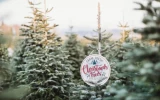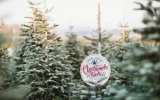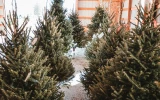21 Most Common Christmas Tree Types (With Pictures)
Christmas trees, a central element of festive celebrations, come in a variety of types, each with its unique characteristics. These trees not only add a touch of nature to holiday decor but also cater to different preferences and traditions. In this article, we will provide a visual guide and insights into each type's specific qualities, such as needle retention, fragrance, and shape to help you identify which one suits your needs.
The most common Christmas tree types include the Fraser Fir, known for its pleasant scent and sturdy branches; the Douglas Fir, popular for its pyramid shape and soft needles; the Balsam Fir, with a dark-green appearance and long-lasting aroma; and the Scotch Pine favored for its excellent needle retention.
You might think picking a Christmas tree is simple, but with 21 varieties, it's an adventure of scents and textures. Let's take a closer look at each of these varieties so you can make an informed choice for your festive decoration needs.
Summary
- There are several common genera of coniferous trees used as Christmas trees, including Abies (true firs), Picea (spruces), and Pinus (pines). Each genus has distinct characteristics.
- Firs generally have the best needle retention and fragrance. Spruces are known for their stiff branches and classic triangular shape. Pines feature excellent strength and traditional aesthetics.
- Key factors in choosing a Christmas tree include needle retention, fragrance, branch strength for holding ornaments, needle texture and safety for kids/pets, shape/fullness, and size for the space.
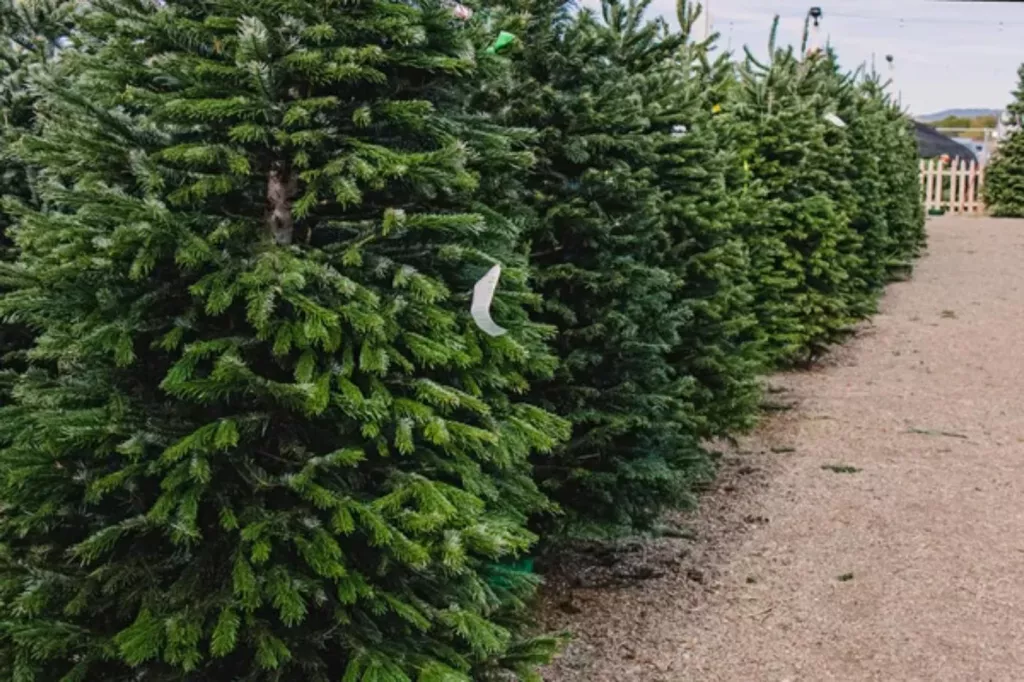
On this page:
A Visual Guide on the Most Common Christmas Tree Types
The first requirement when starting a Christmas tree farm is to choose the right species. The table below shows a list of the most common Christmas tree types you might want to consider.
| Tree Type | Scientific Name | Unique Characteristics | Fragrance | Needle Retention |
|---|---|---|---|---|
| Fraser Fir | Abies fraseri | Excellent needle retention, pleasing fragrance, strong branches for heavy ornaments | Pleasing | Excellent |
| Noble Fir | Abies procera | Symmetrical shape, dark green needles | Mild | Good |
| Balsam Fir | Abies balsamea | Traditional look, sweet scent | Sweet | Good |
| Grand Fir | Abies grandis | Bright green needles, citrus scent | Citrus | Good |
| Concolor Fir | Abies concolor | Blue-green needles, mild citrus scent | Mild citrus | Good |
| Korean Fir | Abies koreana | Dense foliage, compact | Mild | Good |
| Canaan Fir | Abies balsamea var. phanerolepis | Similar to Balsam fir, versatile | Sweet | Good |
| Blue Spruce | Picea pungens | Blue-green color | Mild | Excellent |
| Norway Spruce | Picea abies | Dense foliage, conical shape | Mild | Poor |
| White Spruce | Picea glauca | Strong fragrance | Strong | Good |
| Serbian Spruce | Picea omorika | Slender shape, sweeping branches | Mild | Good |
| Black Hills Spruce | Picea glauca var. densata | Dense, symmetrical | Mild | Good |
| Scotch Pine | Pinus sylvestris | Twisted branches, sturdy | Mild | Good |
| White Pine | Pinus strobus | Soft needles, graceful | Mild | Good |
| Red Pine | Pinus resinosa | Rich green needles, classic shape | Mild | Good |
| Eastern White Pine | Pinus strobus | Long, soft needles in bundles of 5 | Mild | Good |
| Virginia Pine | Pinus virginiana | Short twisted needles, dense | Mild | Good |
| Lodgepole Pine | Pinus contorta | Slim shape | Mild | Good |
| Leyland Cypress | Cupressus × leylandii | Dense, feathery branches | Pleasant | Good |
| Arizona Cypress | Cupressus arizonica | Silver-blue needles | Pleasant | Good |
| Eastern Red Cedar | Juniperus virginiana | Blue-green needles, reddish bark | Pleasant | Good |
Getting to Know the True Firs
(Genus Abies)
The Abies genus, also known as true firs, is adored for its variety of species commonly used as Christmas trees. Each one offers unique characteristics, from needle retention to distinct fragrances, making them a perfect focal point in your festive decorations.
Fraser Fir is known for its classic Christmas charm
Scientific name: Abies fraseri
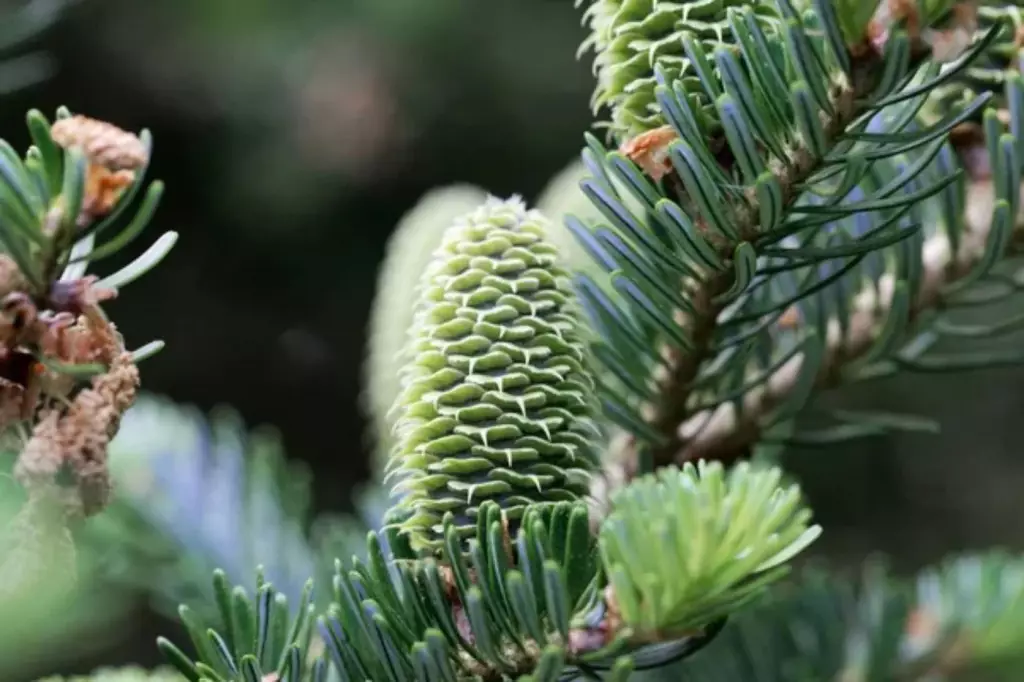
The Fraser fir stands out with its excellent needle retention and pleasing fragrance, making it a go-to choice for your holiday celebrations. Its strong branches are ideal for hanging heavy ornaments.
The quality of the Christmas tree, in this case, excellent needle retention, is one of the factors that influence the profit of a Christmas tree farm.
Noble fir is celebrated for its sturdy and beautiful branches
Scientific name: Abies procera

Prized for its symmetrical shape, the Noble fir is often sought after for both decorating and crafting. Its dark green needles add an elegant backdrop to any assortment of Christmas decor.
Balsam fir is famous for its distinctive fragrance
Scientific name: Abies balsamea
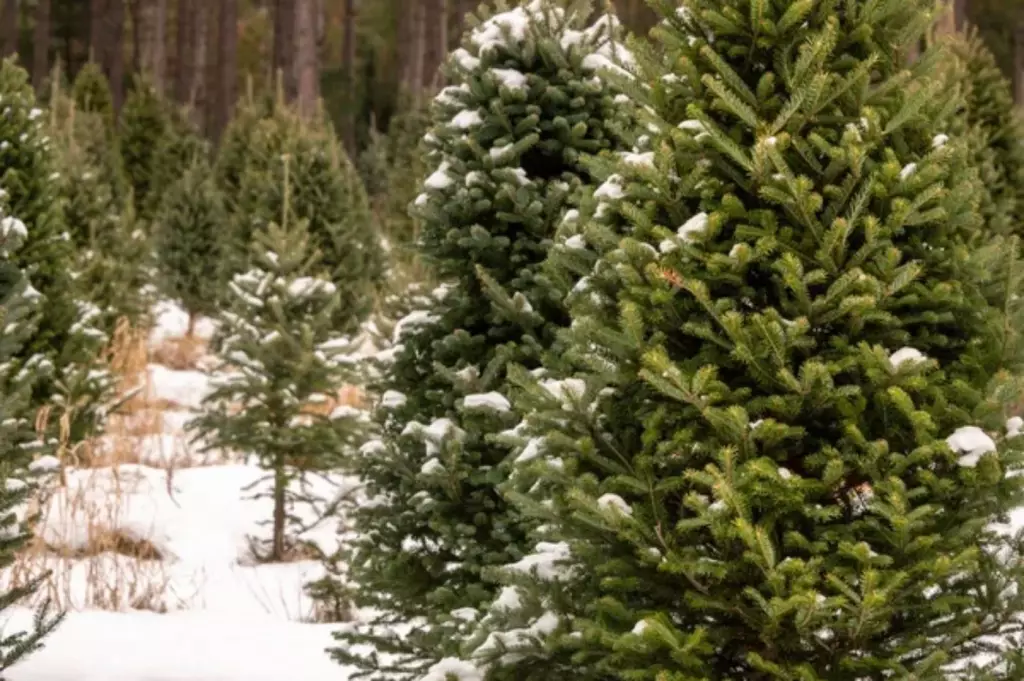
For that traditional Christmas tree look and a sweet scent, the Balsam fir is unmatched. Its fragrant presence fills your home with holiday spirit.
Grand fir is renowned for its impressive height and lush foliage
Scientific name: Abies grandis
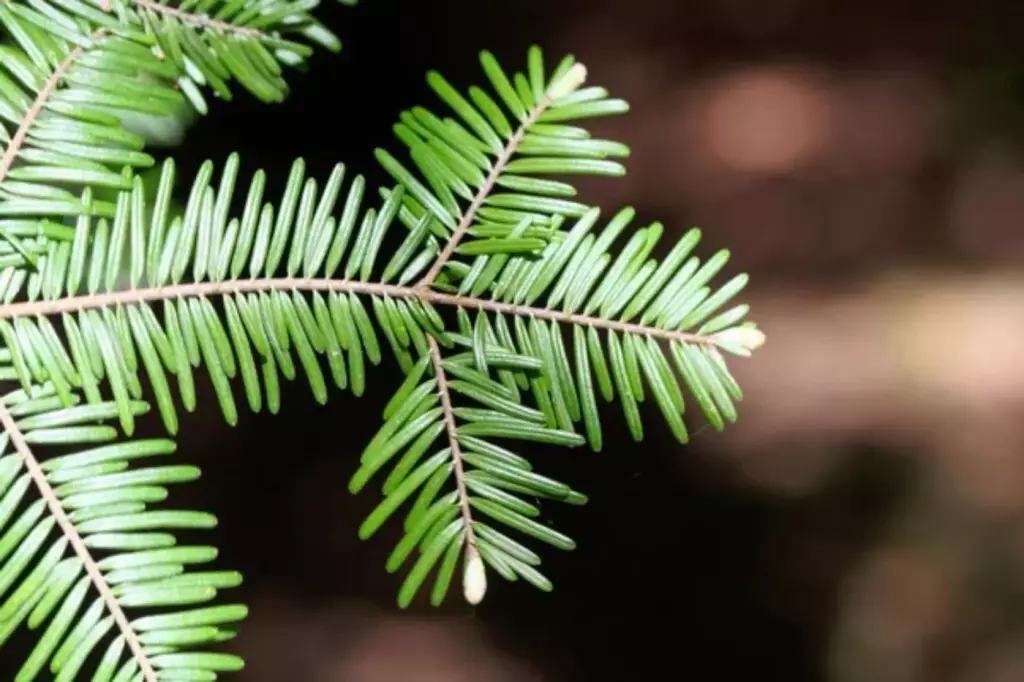
The Grand fir is celebrated for its bright green needles and unique citrus scent. This tree can uplift your holiday décor with its vibrant color and refreshing aroma.
Concolor fir is admired for its unique blue-green needles
Scientific name: Abies concolor
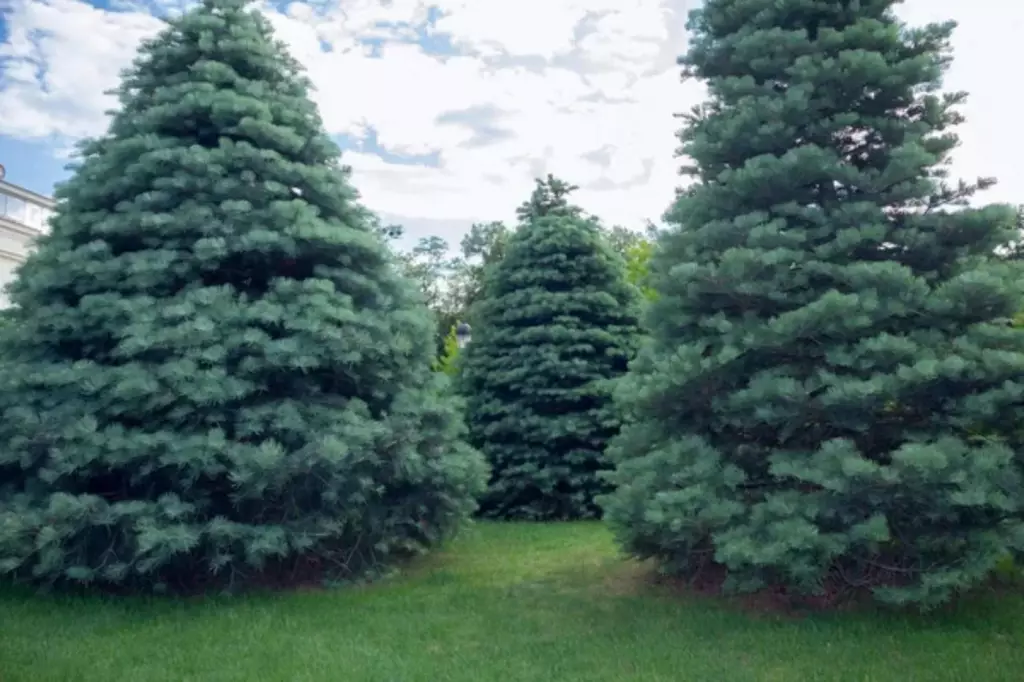
With blue-green needles and a mild citrus scent, the Concolor fir offers a twist on the classic Christmas aroma. Its needles are less prickly, making it a friendly option for families with kids.
Korean fir is distinguished by its vibrant cones and compact shape
Scientific name: Abies koreana
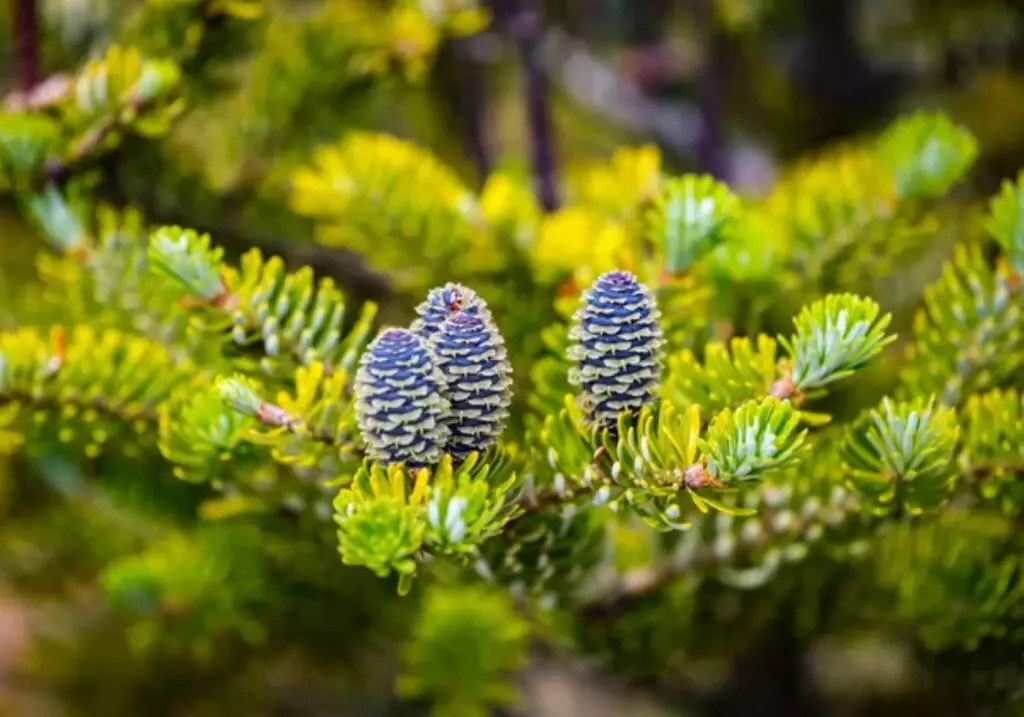
If you desire dense foliage and a compact tree, the Korean fir is your perfect match. It's great for decorating smaller spaces while still making a big statement.
Canaan fir is known for its resilience and versatility
Scientific name: Abies balsamea var. phanerolepis
Similar to the popular Balsam fir, the Canaan fir provides a stunning appearance and is becoming a new favorite for Christmas. Its versatility in various climates makes it a heartwarming choice for your winter festivities.
Exploring the Distinct Beauty of Spruces
(Genus Picea)
Spruce trees, belonging to the genus Picea, adorn many homes during the holiday season with their distinct blue-green color and symmetrical shape. These trees are not only popular for their beauty but also for their stiff branches, which hold ornaments well.
Blue spruce is known for its striking blue foliage and pyramid-shape
Scientific name: Picea pungens

The Blue spruce, known for its unique blue-green color, is a favorite for its needle retention and aesthetic appeal. Its needles have a sharp point, making it less ideal if you have pets or small children.
Norway spruce is valued for its rapid growth and Christmas tree use
Scientific name: Picea abies
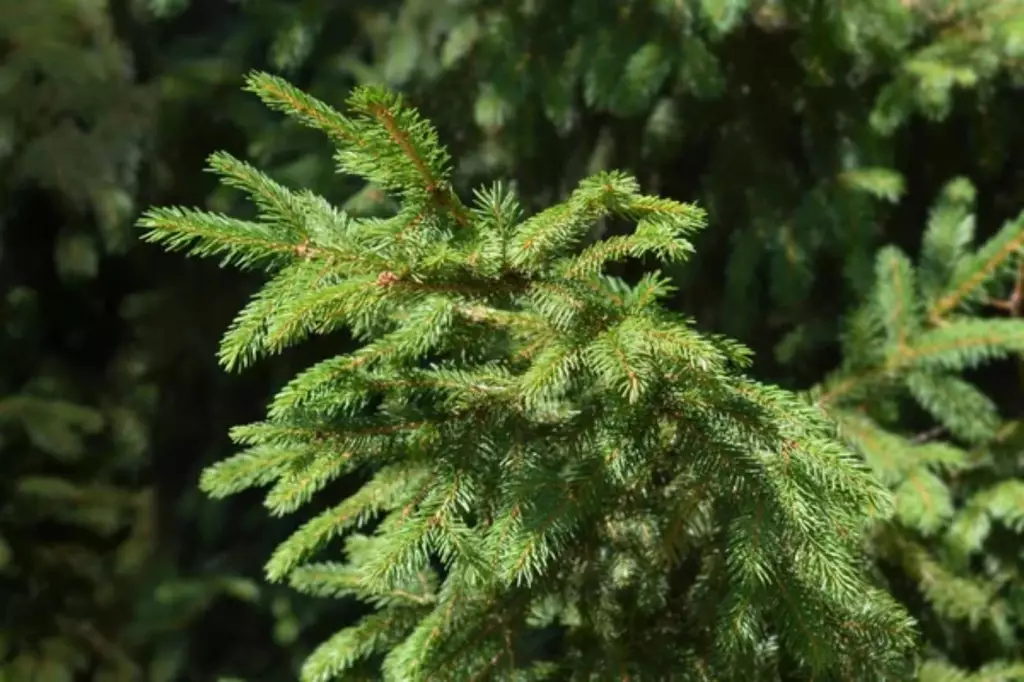
The classic Norway spruce is cherished for its dense foliage and conical shape. However, its poor needle retention can be a drawback, meaning it's best to purchase this tree close to Christmas.
White spruce is recognized for its tolerance to cold climates
Scientific name: Picea glauca
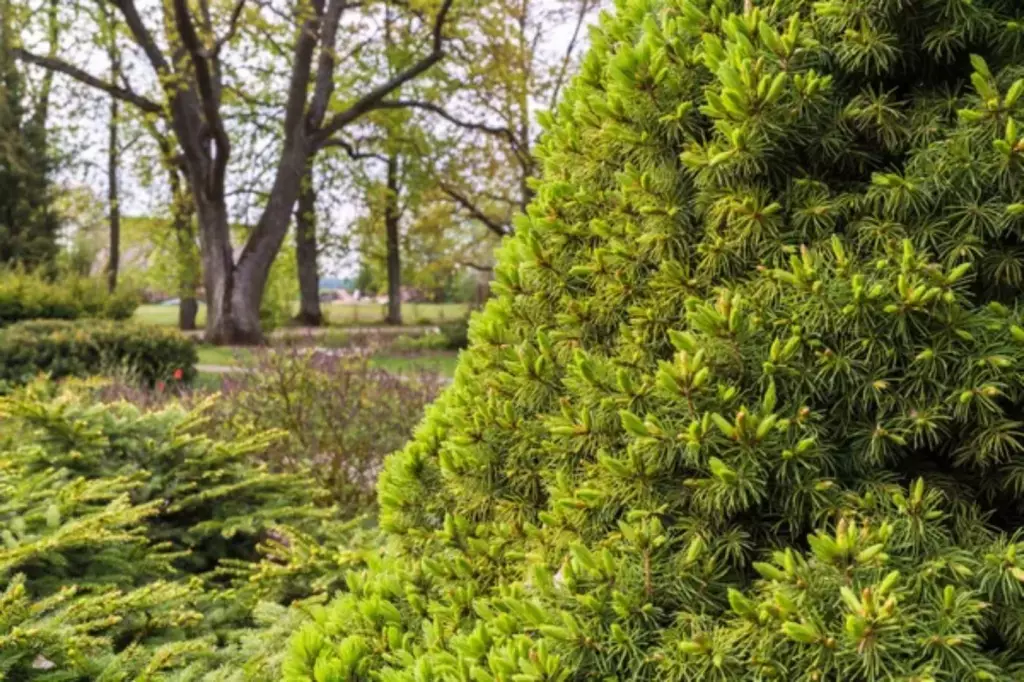
Picea glauca, or White spruce, is known for its strong fragrance and good needle retention. Its short, sturdy needles make it suitable for hanging a variety of ornaments.
Serbian spruce is admired for its slender form
Scientific name: Picea omorika
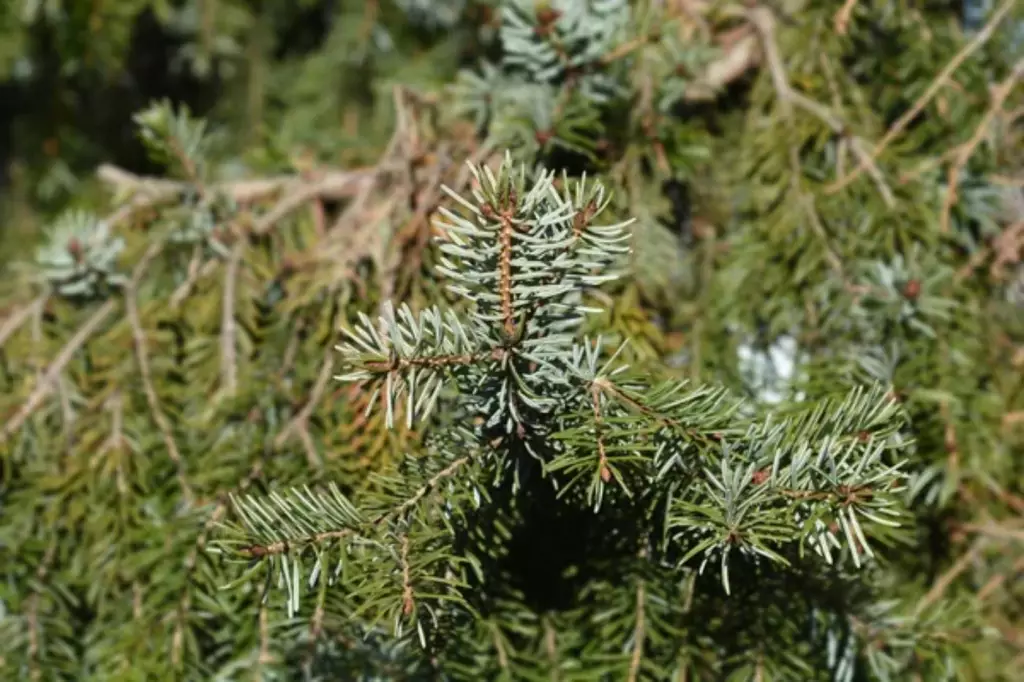
With a slender shape and an elegant display of upward-sweeping branches, the Serbian spruce is versatile, perfect for smaller spaces or as sophisticated door swags.
Black Hills spruce is noted for its dense growth and resistance to drought
Scientific name: Picea glauca var. densata
The Black Hills spruce is a variation of white spruce and is prized for its dense and symmetrical shape. It's an excellent choice for a traditional look and strong enough to support heavier decorations.
Examining the Majestic Nature of Pines
(Genus Pinus)
The genus Pinus encompasses a variety of pines that are popular as Christmas trees due to their appealing shape, pleasant texture, and ability to support heavy ornaments.
These trees not only add holiday cheer but also serve as wildlife habitat throughout the year.
Scotch pine is notable for its unique twisted trunk
Scientific name: Pinus sylvestris

The Scotch Pine, with its distinctive twisted branches, is known for its robust structure. It has sturdy branches that are ideal for hanging those heavy ornaments you love. A truckload of Scotch pine costs around $400 - $700.
White pine is distinguished by its long, soft needles
Scientific name: Pinus strobus
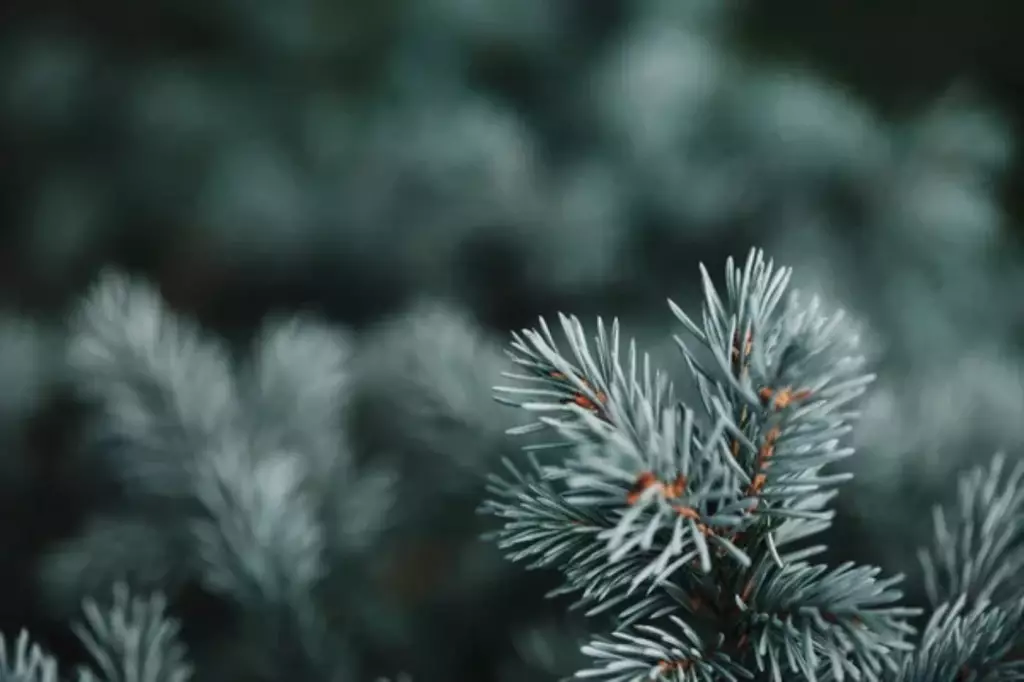
Characterized by soft needles and a graceful appearance, the White Pine offers a gentle texture that makes it pet-friendly. Its full form with five needles per bundle brings a lush look to your festive decor.
Red pine is renowned for its reddish bark
Scientific name: Pinus resinosa
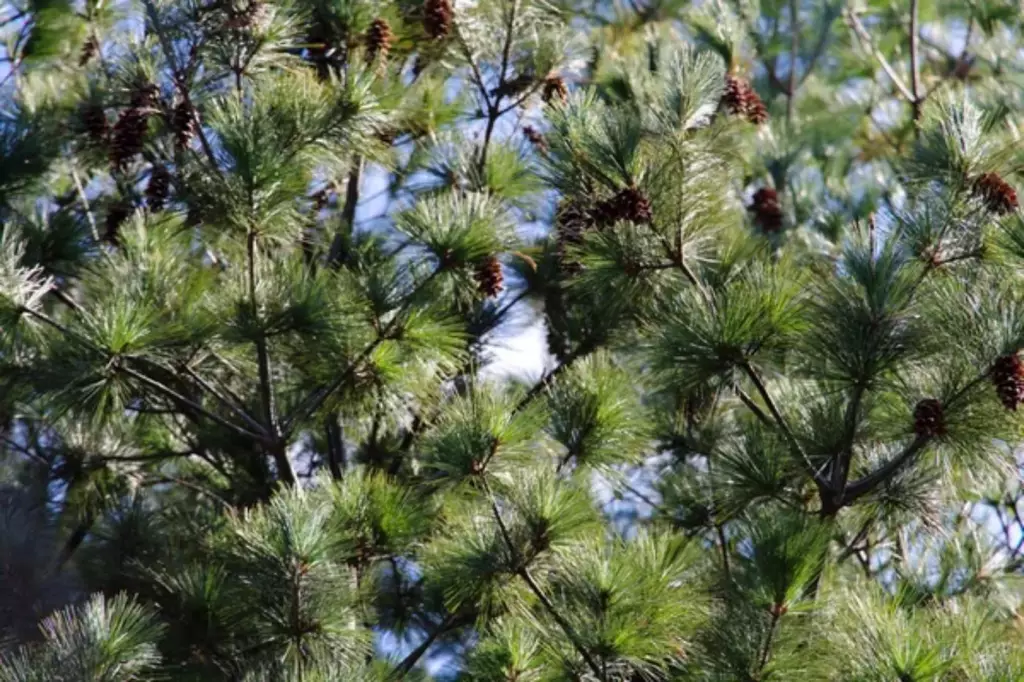
The Red Pine stands out with its rich, dark green needles and classic pine shape. It's a common choice for those who appreciate traditional Christmas aesthetics and provides a sturdy base for decorations.
Eastern white pine is characterized by its fine-feathered needles
Scientific name: Pinus strobus
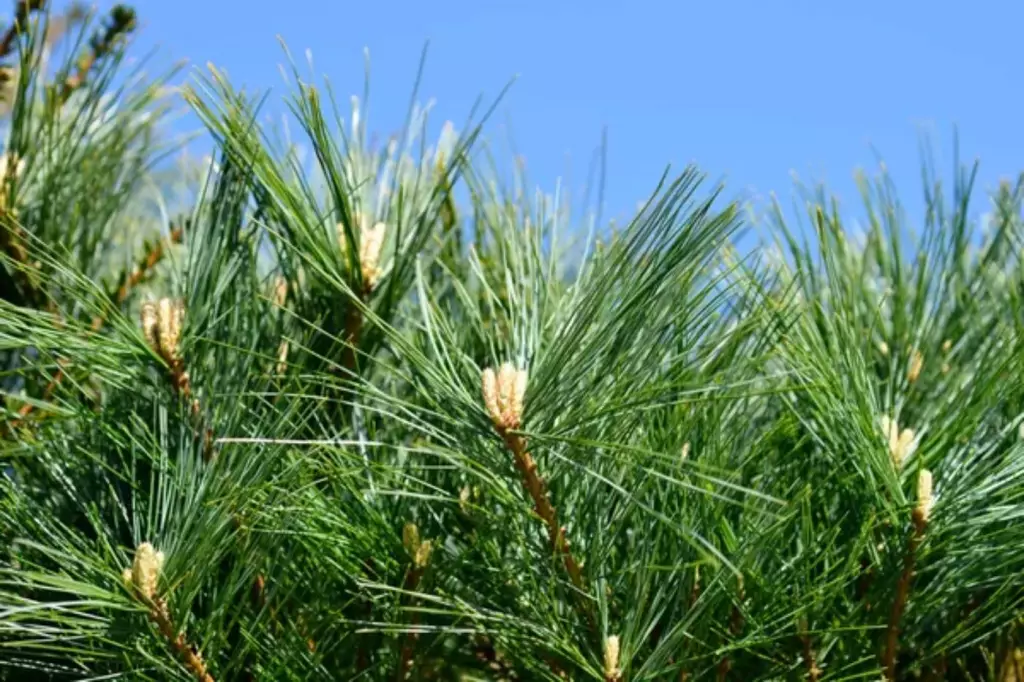
Very similar to the White Pine, the Eastern White Pine is loved for its long, soft needles that are grouped in fives. This tree's fullness and soft texture make it attractive to both the eye and the touch.
Virginia pine is recognized for its short, twisted needles
Scientific name: Pinus virginiana
With its short and twisted needles, the Virginia Pine features a dense, classic pine shape and sturdy branches that can handle a variety of ornaments. It's a great choice if you're looking for a traditional yet durable Christmas tree.
Lodgepole pine is known for its slender profile

Scientific name: Pinus contorta
The Lodgepole Pine has a slimmer shape, making it well-suited for smaller spaces. Despite its size, it still offers strong branches that are perfect for holding your precious ornaments.
Unveiling the Graceful Beauty of Cypresses
(Genus Cupressus)
The Cupressus genus encompasses several cypress species renowned for their stately appearance and adaptability as Christmas trees. These cone-bearing plants bring a festive charm to your home with their unique foliage and pleasing fragrances.
Leyland cypress is good for allergy sufferers
Scientific name: Cuprocyparis leylandii

The Leyland cypress is a great choice for allergy sufferers as it doesn't produce much pollen. You'll recognize the tree by its dense, feathery branches and lush green color.
It's not just a decorative tree; it serves well as a privacy screen throughout the year due to its rapid growth rate.
Arizona cypress has a unique silver-blue color
Scientific name: Cupressus arizonica

For those looking for a Christmas tree with a twist, the Arizona cypress offers silver-blue needles that add a distinctive touch to seasonal decorations.
Its unique silver-blue color and pleasant fragrance make Cupressus arizonica a refreshing alternative to traditional trees.
Despite its southwestern roots, this tree has adapted to various climates, making it suitable for small spaces due to its neat pyramid shape.
Discovering the Versatility of Junipers
(Genus Juniperus)
Junipers are versatile evergreens, ranging from ground-hugging shrubs to towering trees, that bring year-round color and texture to your landscape. With distinctive foliage and appealing cones that look like berries, they're a favorite for creating festive Christmas cheer.
The Eastern red cedar is a versatile and hardy native
Scientific name: Juniperus virginiana
Your Eastern Red Cedar is more than a traditional Christmas tree; it's a rugged native with a slender, conical shape that can reach up to 60 feet tall.
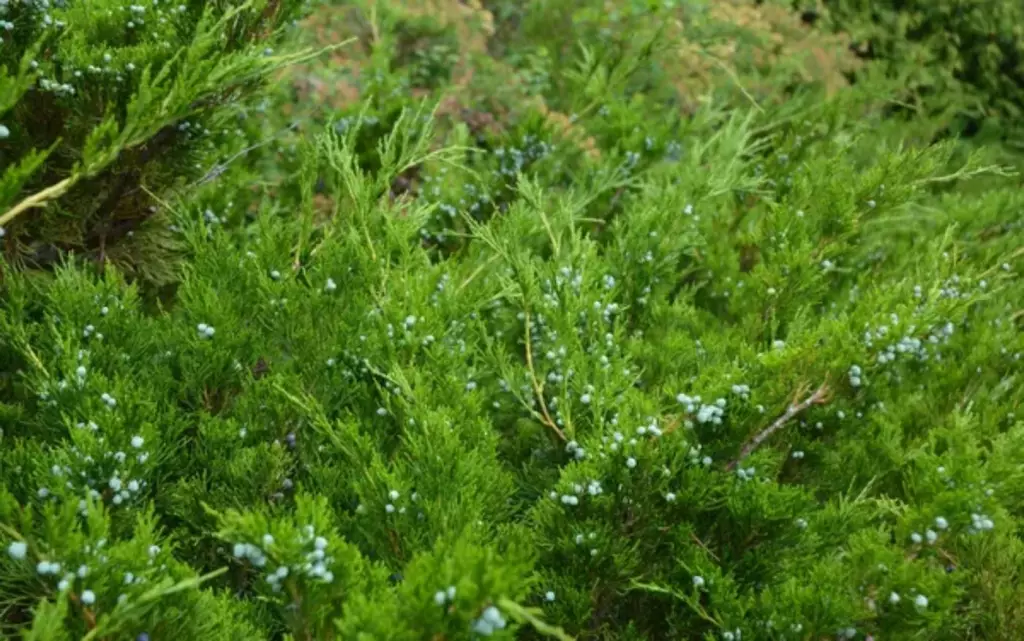
The bluish-green needles and distinctive reddish-brown, peeling bark make it a striking choice for your holiday display. Don't be fooled by its name; though it's called a cedar, it's a juniper, with berry-like cones adding a touch of color to winter landscapes.
